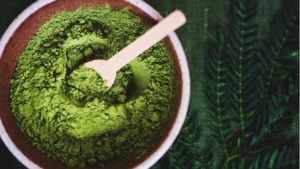IPO Watch: A good day at the office for kaolin debutant Pinnacle Minerals

Pic: John W Banagan / Stone via Getty Images
- Pinnacle Minerals debuted yesterday after a $4.5m IPO at 20c a share
- Lifted 1c or 5% to 21c to end its first trading day on the ASX ahead
- Executive director Robert Hodby says demand for kaolin is growing from the paper and ceramics industries
The newest player in the ASX-listed kaolin market Pinnacle Minerals (ASX:PIM) is off to a solid start after rising 5% on debut.
Pinnacle listed yesterday after raising $4.5m at 20c a share in a “heavily oversubscribed” IPO.
The company’s main focus is on the Bobalong kaolin clay project near Albany in southern WA, where it has two granted tenements covering 116km2 and is targeting a ~10Mt resource, enough to support a 350,000tpa operation over 30 years.
It thinks its grades and brightness level will support a direct shipping ore operation with minimal beneficiation, with drilling campaigns and a scoping study already completed over its Bill’s Middle and Tambellup East tenements.
Pinnacle is hoping to generate early cashflows to support exploration at its nearby Holly project, where Rio Tinto hit kaolin in historical drilling, and the Camel Lake and White Knight projects in South Australia.
Pinnacle Minerals (ASX:PIM) share price today:
Capturing a niche
On a global scale the kaolin market is relatively unknown but not insignificant. It’s currently worth around US$6.4 billion, but demand is expected to grow to US$8.2 billion by 2024.
Due to its extraordinary white colour it is mainly used in the filing and coating of paper as well as ceramics, but has side markets in everything from pharmaceuticals to agriculture and cosmetics.
Further down the line kaolin clay is also a feedstock for high purity alumina, a critical safety material which separates the cathode and anode parts of lithium ion batteries to stop them catching fire and going kaboom.
That’s not the market being targeted by Pinnacle just yet. The high brightness level (around 80-85%) of its Bobalong clay makes it ideally suited to ceramics and paper markets as a direct shipping ore product.
It’s moving into a niche area, especially when compared to major exploration sectors like gold and lithium.
But there are now plenty of ASX stocks looking for what is one of many commodities to have been given the colloquial label of “white gold”.
The most notable is Andromeda Metals (ASX:ADN), which has become a $460 million capped company off the back of its Great White kaolin and Camel Lake halloysite projects.
Among the others are recent exploration IPO iTech Minerals (ASX:ITM), Latin Resources (ASX:LRS), Oar Resources (ASX:OAR), PepinNini Minerals (ASX:PNN), the operating Suvo Strategic Minerals (ASX:SUV), HPA plays FYI Resources (ASX:FYI) and Altech Chemicals (ASX:ATC) and the in development WA Kaolin (ASX:WAK).
Pinnacle ‘cheap’ on current EV
With an EV of just $2.5 million and a scoping study on the way at Bobalong, executive director Robert Hodby thinks Pinnacle is cheap in comparison.
“I definitely think that we’re more advanced than the EV suggests. We structured the company to make it attractive and then when you see what the market caps of some of our peers are maybe we went in a little bit too soft.
“But once we hit our straps and we start putting out some results, I’m sure we’ll see a correction to our price and we’ll probably move up closer to what our peers are.”
The first port of call for Pinnacle will be drilling at Bobalong, looking to replicate sample results like 38.3% AL2O3 and 45.9% SIO2.
“We’ve got a drill program commencing very soon down at Bobalong. The aim for that is to drill out a suitable amount of ground down there to delineate a resource,” Hodby said.
“That will be backed by obviously the drilling and the assays, hoping that the assay results that come through mirror the previous results we’ve got down at Bobalong.”
Pinnacle is also aiming to secure access and drill the nearby Holly project, where Rio Tinto’s CRA exploration business identified kaolin mineralisation in drilling back in 1995.
Pinnacle has an exploration target there of between 140Mt and 350Mt of kaolin at 75-84% brightness over a 5km2 area.
“The quality looks to be at least as good as the results we’ve got from Bobalong based on the results that CRA released,” Hodby said.
“We believe once we get access we’ll be able to duplicate them. The reason we believe that CRA didn’t advance the project was purely on economics at the time.
“There’s been a bit of a resurgence in kaolin in the price and also the levels of demand. There’s an interest in the downstream processing opportunities.”
Kaolin demand on the up
Pinnacle has already been talking to potential customers in China for kaolin clay from its Bobalong deposit, with test work results from the Wuhan University of Technology due soon.
Hodby said in discussions with customers they had expressed the desire to diversify their supply to add to their domestic producers.
“The groups we’ve spoken to, we actually visited a couple of years ago,” he said.
“They … are in the process of qualifying our products for both the ceramic and paper markets.
“Companies that we’re talking to are looking for diversity in supply.
“Having a source of kaolin in a safe jurisdiction like Australia is very attractive to them.”
Those same groups say demand is increasing for kaolinite materials.
“The groups we’ve spoken to believe that demand is going to increase for kaolin,” Hodby said.
“The price, we believe, is sitting at about $300 a ton… there may be a slight increase in that.”
With its Camel Lake project in SA, Pinnacle is just 40km from Andromeda’s project of the same name. An incredibly pure product in the minus 2 µm fraction, the clay at Andromeda’s Camel Lake is close to 100% halloysite, a clay similar to kaolinite but far rarer.
Known for its tubular structure, halloysite can be used in hydrogen storage, water purification, carbon capture, soil remediation and renewable energy.
Hodby is hopeful Pinnacle can make a similar discovery to Andromeda’s.
“There’s not a lot of halloysite around and it’s commanding fairly high prices,” he said. “The market’s indicating it could be as high as $7500/t, which is why Andromeda has got the market cap that it does.
“And I think as more and more uses are found for halloysite, demand for it will increase but so will the price.”
At Stockhead, we tell it like it is. While Pinnacle Minerals is a Stockhead advertiser, it did not sponsor this article.
Related Topics
UNLOCK INSIGHTS
Discover the untold stories of emerging ASX stocks.
Daily news and expert analysis, it's free to subscribe.
By proceeding, you confirm you understand that we handle personal information in accordance with our Privacy Policy.








